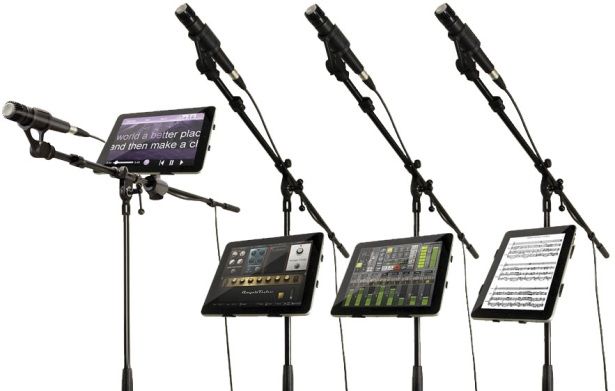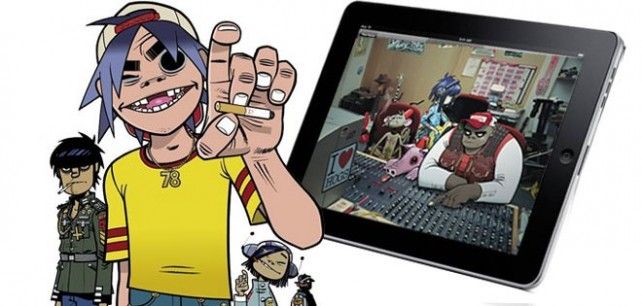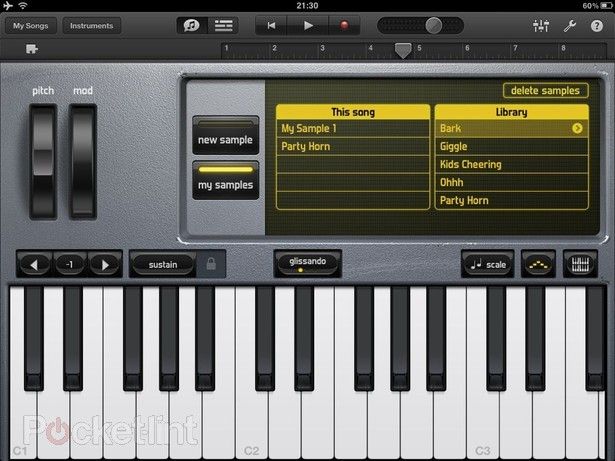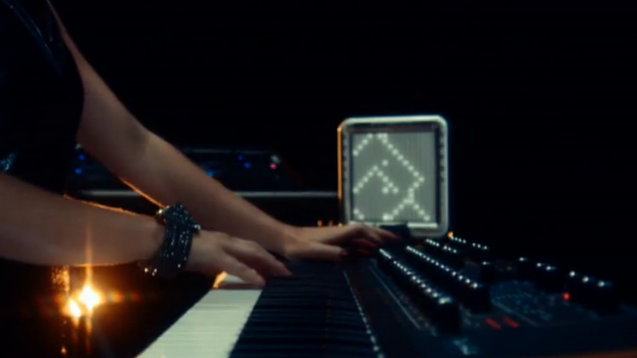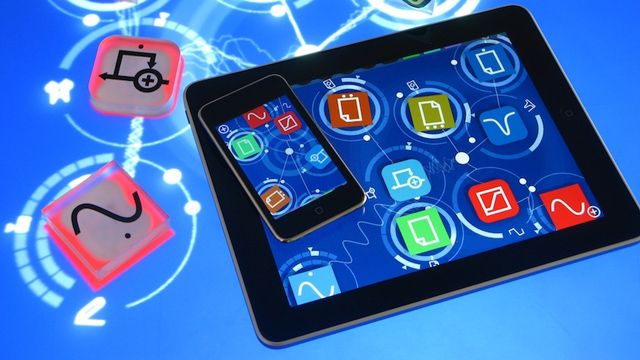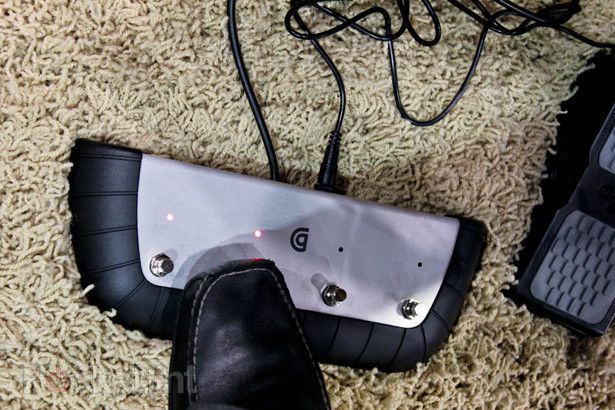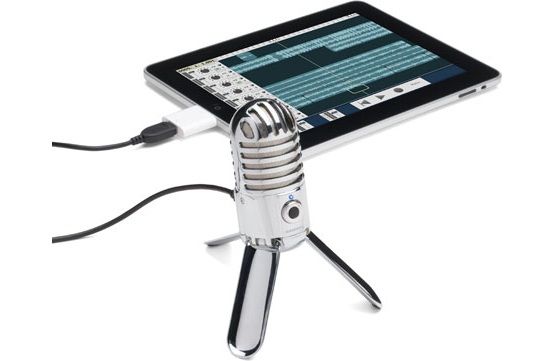Android may be catching up fast, but it was the iPad that made the tablet a must-have piece of kit for any self-respecting gadget aficionado. For the while, at least, the iPad continues to lead the charge and, though its games, web browsing and playing about on Facebook and Twitter are as popular as ever; it's also managed to infiltrate the music industry. We're not just talking about the fact that the tablet can house your entire iTunes music library. It's also fast becoming a useful tool for musical types, both professional and amateur.
The most high-profile use of Apple's tablet by a pro musician so far involves the latest album from ex-Blur frontman Damon Albarn's hip-hop project Gorillaz, which was created largely on his iPad during a 32-day tour of North America. The album uses real instruments and vocals combined with a good helping of synthesizers with Albarn making use of around 20 apps including Korg iELECTRIBE, Moog Filatron and FunkBox Drum Machine. It perfectly illustrates the convenience of being able to lay down tracks on a device, while on the move, with no access to a desktop computer or studio.
Convenience and portability are obviously two great benefits, especially, as with Albarn, plenty of musicians spend a great deal of time on the road; however the bonus of using a tablet goes further than that, as accessory brand Griffin's PR director, Jackie Ballinger, told us.
"Technology, like the iPad enables musicians to become mobile without losing quality, now people are able to make music anywhere without limitations and without substantial costs.
"With the iPad and relevant apps a less costly alternative to recording studios and instruments, aspiring musicians have the opportunity to produce professional recording using solely these means."
Money appears to be one of the most important factors - not exactly shocking when you consider the huge cost involved in putting an album together. If an artist can record an album for less, then why not?
The cost of producing a chart album is estimated to be a whopping £250,000, so it's hardly surprising that musicians are opting for a more affordable route, especially those who don't have a record deal and are producing the work themselves. Two-piece US indie band The Ultramods managed to produce an entire album (entitled Underwear Party) in just 2 weeks, only using GarageBand for iPad.
While there are plenty of music apps available for the iPad, it's been Apple's own GarageBand that really brought the idea of the iPad as a musical tool into the mainstream. Currently the top-selling paid-for music app on the iTunes store, GarageBand is a bargain at just £2.99 and enables you to lay down multiple tracks using a variety of virtual instruments, as well as recording vocals using the built-in microphone. With US iPad prices starting at $499, along with the $4.99 for the GarageBand, that puts the basic cost of The Ultramods's album production at just under $505. The equivalent in the UK would be £399 for the iPad and £2.99 for the app - £401.99 in total, less than a five-hundredth of the cost of the pro route.
Although GarageBand for iPad has yet to be widely used by any other big-name bands in the music world (no offence to The Ultramods), it certainly seems to be making headway. Marillion keyboard player and CEO of the Featured Artists Coalition, Mark Kelly, recently told Pocket-lint in an exclusive interview:
"I love using GarageBand on the iPad - it's fantastic. You can touch a key and slide your finger up and it'll bend the note up and you can do that with two different fingers on two notes at the same time and move them at different intervals, which is something you cannot do on anything else and it sounds great. I've never heard anything like it before. I'll definitely be using that on our next album."
It's not just guitars, keyboards and drums that have made their way onto Apple's tablet. There are plenty of quirky digital instruments that have also been ported across. Yamaha's unusual and somewhat baffling Tenori-on - famously used by electro-pop songstress Little Boots - has also been given the iPad treatment. This space-age electronic instrument features a grid of 256 LED switches that can be used to produce tunes by controlling the time and pitch of the sounds made by each button. The iPad version uses much the same system and is even a similar size to the original instrument
Other quirky instruments that have been ported across to the iPad include the Haken Continuum Fingerboard, a MIDI instrument used on stage by prog rocker and keyboardist Jordan Rudess, which can be used on the tablet courtesy of the MorphWiz app; while experimental musicians can also get their hands on an iPad version of Reactable - the weird, electric blue touchscreen tabletop instrument that Bjork used on her Volta tour (also now available for Android).
Part of the appeal here is that you can not only access multiple instruments on one device, but also use gear that many of us wouldn't be able to afford. While most of us could stretch to a cheap keyboard or guitar, it's unlikely that many could shell out the €9,700 asking price for the real Reactable experience (which works out at just under £8,500). The fact that most of these apps cost less than 20 quid make them a great option for opening up the world of music to those that don't have a bottomless pit of cash. But, the iPad music revolution doesn't begin and end with apps. Apple's touchscreen device has also spawned plenty of accessories.
Accessory maker Griffin is perhaps the most well-known brand when it comes to music-based add-ons for the iPad. The US company produces several iPad-flavoured products including the Griffin GuitarConnect, which can be used to plug your guitar into your Apple tablet or phone. With the help of the iShred Live app, this nifty little lead effectively turns your iDevice into a mini guitar rig. Griffin also produces the StompBox which can be used with the same app as a controller for the virtual onscreen pedals, while the Mic Stand Mount enables you to attach your iPad to any standard microphone stand and the DJ Cable works in conjunction with the Djay app.
Griffin isn't the only brand to make full use of the iPad's popularity among musicians. Samson Tech produces the Meteor Mic - a plug and play USB studio microphone that can be teamed with your laptop or iPad. While using 21st century technology, the product has been designed to look like an old-fashioned chrome mic, albeit with an integrated folding tripod that allows for flexible positioning. So, there's no need for a separate microphone stand. The company told us:
"Musical iPad accessories are proving to be enormously popular. They open up professional recording and mixing abilities to casual musicians and talented artists that might not have had access to the equipment they needed. People can produce entire studio-quality albums with an iPad and a Meteor Mic."
So, although costs can theoretically be reduced by doing things on the cheap with an iPad, is this really the way forward for the music industry? While the Gorillaz album was largely created using an Apple tablet, it was still mixed and mastered at the famous Abbey Road Studios. So, it can't fully replace the musical wizardry offered by a professional studio. Taking one step back though, could the iPad and these musical apps ever become at least commonplace among the professionals? Samson Tech told us:
"The technology and acoustics behind studio recording will always outperform an iPad. The apps are more likely to become the norm among DJs rather than straight musicians. Recording studios will always be preferred, but for a musician on a budget, the iPad makes perfect sense."
So, while tablets may be the future of music for some cash-strapped musicians who are trying to put together an album on a shoestring budget, it seems that they're unlikely to take over from the professional studio approach anytime soon, if ever. So, what can we expect to see next?
While there are books of musical notation and guitar tablature available - including individual songs - in the books section of iTunes, it seems strange that this is an area that Apple has, so far, not fully exploited. Muzibook offers free PDFs that can be read using iBooks or compatible sheet reader music apps, but the Cupertino powerhouse has yet to launch its own sheet music service.
We wouldn't be surprised if Apple was to introduce a separate sheet music section to the iTunes store at some point, purely because of the iPad's increasing popularity among musicians and the fact that it's so well suited to carrying a selection of digital sheet music around without the need for reams of paper. Develop an app that could listen to what you're playing and "turn the pages" for you, and we could be seeing tablets on music stands everywhere.
We would also expect to see more accessories like the StompBox and the Meteor Mic launching, and maybe we might even start to see licensed products from music brands such as guitar experts Fender and Gibson or drum maker Pearl. Whatever happens next, it seems likely that the iPad will continue to take the music world by storm as an ever-increasing array of blindingly good apps continue to emerge.
Do you use your iPad for making music? Let us know in the comments box below.

